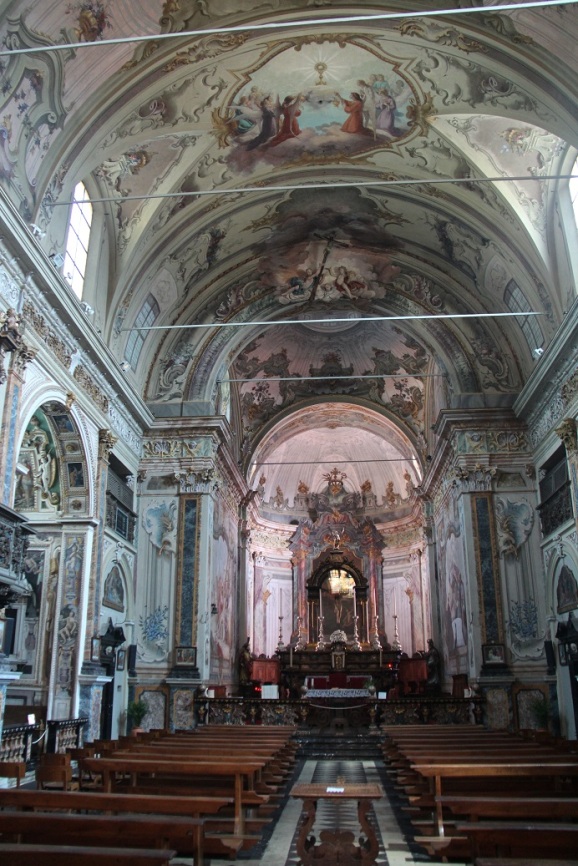While visiting The town of Gravedona on the northern end of Lake Come, I hiked to two small nearby lakeside towns: Domaso and Dongo.
For the hike to Domaso, north of Gravedona, I took an inland trail, not on the lakefront, but further uphill. This meant climbing a lot of steps, but the trail passed through Segna and Pazzolo, two very small villages where you see no tourists, and have lots of stunning vistas to the lake and lakefront. I saw lots of weathered old buildings, a pair of smiling donkeys, funky chimneys, grapevines, and flowers of the brightest magenta I have ever seen. Domaso, population nearly 1,500 people, was formerly a fishing village, is smaller than Gravedona, although in the distant past was in direct competition with Gravedona to be the dominant town both politically and in commerce. At present, Domaso is a small, peaceful hamlet with a small and pleasant lakeside promenade and harbor, and a very beautiful and impressive church complete with its iconic bell tower with witch hat spire which dominates the skyline and serves as a way-finding beacon. The main activities here are water sports thanks to the “Breva”, the daily lake breeze which occurs on this part of the lake every afternoon from June through October. There is a large fan-shaped flat land mass just to the north of the old-town center and harbor that is infused with public beaches and campgrounds. Numerous hiking trails pass through and around the area.
Dongo, population 3,440, is an approximate 1 hour hike south of Gravedona. The lakeside trail passes by pastures and campgrounds. Upon approach to Dongo and the Albano River, next to a church, I found a well groomed parcel of land with manicured lolly-pop shaped trees and park benches, a perfect spot to enjoy the views to the lake, or for young lovers to make out (see photo). As with most of the lake towns, Dongo was previously a fishing village built along the lakefront where a river joins it. Dongo’s lakeside promenade and harbor are very compact due to the constraints of the Albano River and the S. Bernardo mountain. One of Dongo’s main historical interests is its place in the history of the end of the 2nd World War. On April 27, 1945, troops escorting Beneito Mussolini were stopped by the Italian Resistance fighters, and Mussolini and his ministers were held in the Palazzo Manzi. Mussolini was later executed in the plaza in front of the Palazzo. The bottom floor of the Palazzo Manzi now contains the End of World War II Museum. Recently renovated, it is an innovative, virtual, interactive showplace that documents the Italian Resistance Movement and the capture and execution of Mussolini. The exhibits are imaginative, well done, and thought provoking, and a must see in Dongo.


































